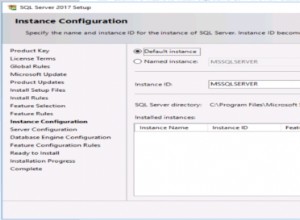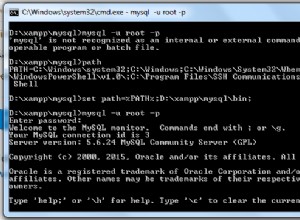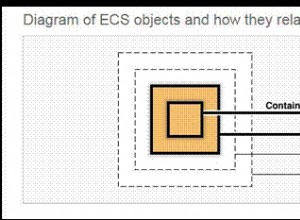Encuentro esta pregunta muy confusa. Si la pregunta real es cómo calcular el trimestre de un DATE arbitrario entonces ya hay muchos ejemplos, como:
Cómo calcular el cuarto de una fecha arbitraria
Algunas fechas para las pruebas:
create table lots_of_dates as
select trunc(sysdate - level * 7) as d
from dual
connect by level <= 52;
Encuentra los cuartos:
select d,
to_char(d, 'YYYY-Q') as QUARTER,
trunc(d, 'Q') as Q_FIRST_DAY,
add_months(trunc(d, 'Q'), 3) - 1 as Q_LAST_DAY
from lots_of_dates
order by 1;
Resultados:
D QUARTE Q_FIRST_DAY Q_LAST_DAY
------------------ ------ ------------------ ------------------
02-SEP-12 2012-3 01-JUL-12 30-SEP-12
09-SEP-12 2012-3 01-JUL-12 30-SEP-12
16-SEP-12 2012-3 01-JUL-12 30-SEP-12
23-SEP-12 2012-3 01-JUL-12 30-SEP-12
30-SEP-12 2012-3 01-JUL-12 30-SEP-12
07-OCT-12 2012-4 01-OCT-12 31-DEC-12
14-OCT-12 2012-4 01-OCT-12 31-DEC-12
21-OCT-12 2012-4 01-OCT-12 31-DEC-12
28-OCT-12 2012-4 01-OCT-12 31-DEC-12
04-NOV-12 2012-4 01-OCT-12 31-DEC-12
11-NOV-12 2012-4 01-OCT-12 31-DEC-12
...
Un procedimiento PL/SQL que devuelve el primer y último día de un trimestre
Las fechas de inicio y finalización del trimestre son constantes para todos los años excepto la parte del año. Es decir. el segundo trimestre siempre comienza el 1 de abril y finaliza el 30 de junio de cada año. Por lo tanto, el día y el mes se pueden fijar y solo se debe ajustar la parte del año.
Una función solo puede devolver un valor, por lo que la subrutina se implementa como un procedimiento. También proporcioné una función de envoltorios para el procedimiento:
-- raises CASE_NOT_FOUND for non-existing quarters
create or replace procedure get_quarter_days(
p_year in number,
p_quarter in number,
p_first_day out date,
p_last_day out date
) deterministic as
begin
case p_quarter
when 1 then
p_first_day := to_date(p_year || '-01-01', 'YYYY-MM-DD');
p_last_day := to_date(p_year || '-03-31', 'YYYY-MM-DD');
when 2 then
p_first_day := to_date(p_year || '-04-01', 'YYYY-MM-DD');
p_last_day := to_date(p_year || '-06-30', 'YYYY-MM-DD');
when 3 then
p_first_day := to_date(p_year || '-07-01', 'YYYY-MM-DD');
p_last_day := to_date(p_year || '-09-30', 'YYYY-MM-DD');
when 4 then
p_first_day := to_date(p_year || '-10-01', 'YYYY-MM-DD');
p_last_day := to_date(p_year || '-12-31', 'YYYY-MM-DD');
end case;
end;
/
show errors
create or replace function get_quarter_first_day(
p_year in number,
p_quarter in number
) return date deterministic as
v_first_day date;
v_last_day date;
begin
get_quarter_days(p_year, p_quarter, v_first_day, v_last_day);
return v_first_day;
end;
/
show errors
create or replace function get_quarter_last_day(
p_year in number,
p_quarter in number
) return date deterministic as
v_first_day date;
v_last_day date;
begin
get_quarter_days(p_year, p_quarter, v_first_day, v_last_day);
return v_last_day;
end;
/
show errors
Cómo usar las subrutinas anteriores:
declare
v_first_day date;
v_last_day date;
begin
get_quarter_days(2011, 1, v_first_day, v_last_day);
dbms_output.put_line(v_first_day || ' - ' || v_last_day);
get_quarter_days(2012, 2, v_first_day, v_last_day);
dbms_output.put_line(v_first_day || ' - ' || v_last_day);
get_quarter_days(2013, 3, v_first_day, v_last_day);
dbms_output.put_line(v_first_day || ' - ' || v_last_day);
get_quarter_days(2014, 4, v_first_day, v_last_day);
dbms_output.put_line(v_first_day || ' - ' || v_last_day);
dbms_output.put_line(get_quarter_first_day(2015, 1) || ' - ' ||
get_quarter_last_day(2015, 1));
end;
/




